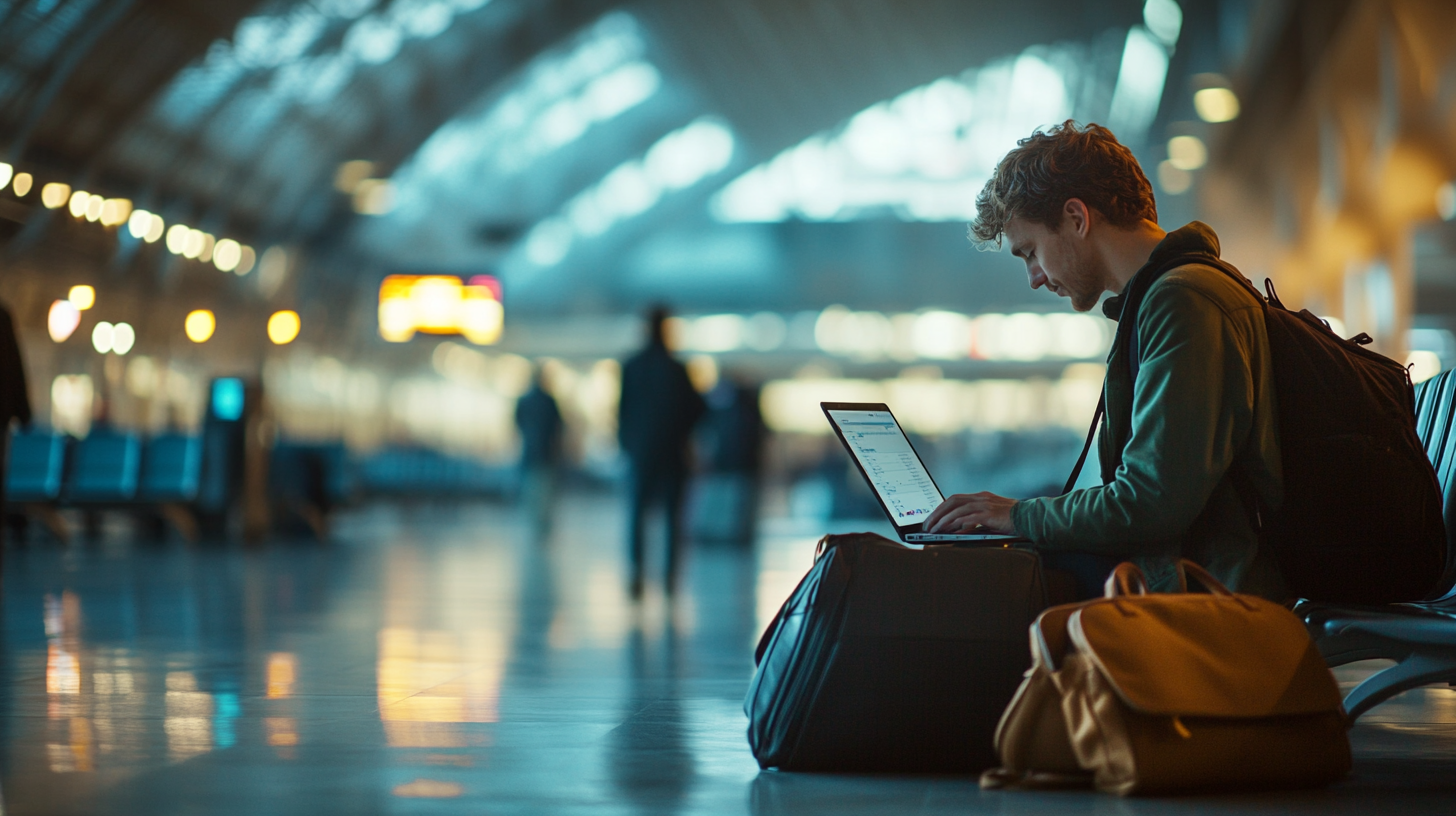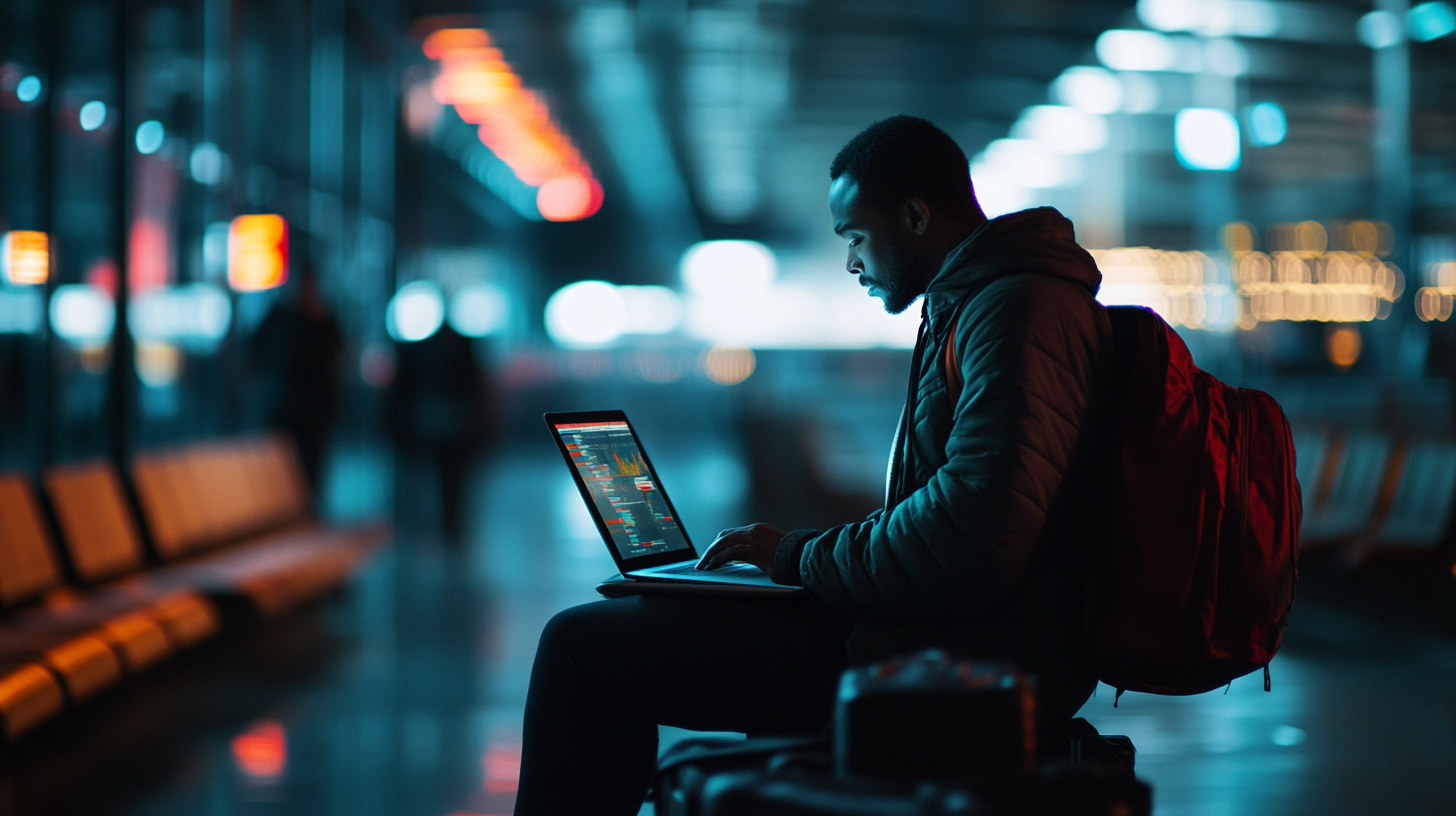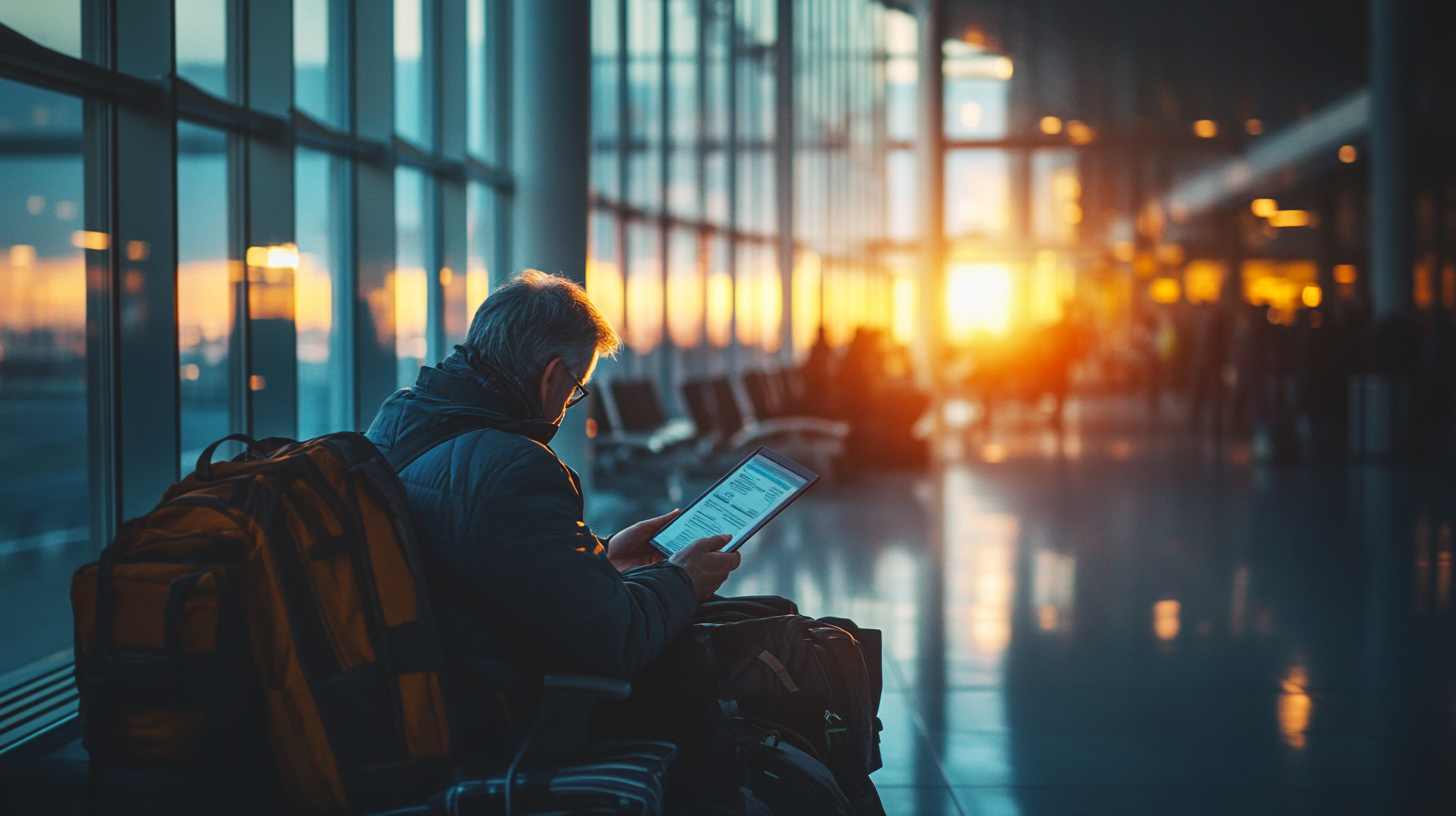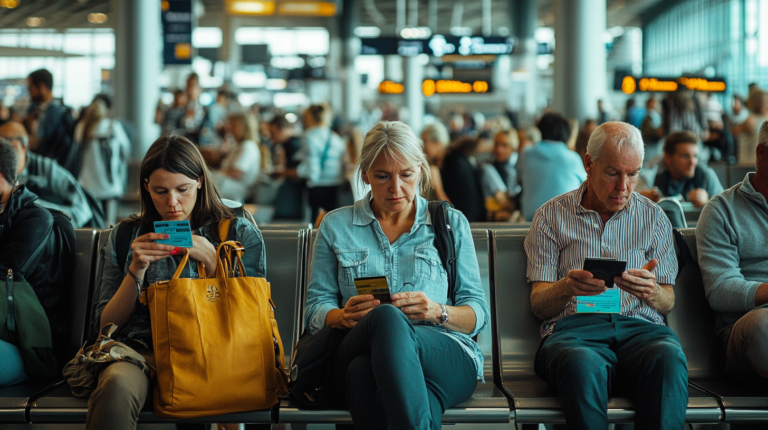Mastering Online Check-In for International Flights
I’ve discovered over the years that online check-in is an absolute must for international flyers, providing a sense of control in an otherwise hectic traveling world. By completing check-in steps remotely, we shave precious minutes off our airport routine and bypass some of the typical stress triggered by long lines. In an era where saving time directly translates to saving money and energy, embracing online check-in can be the difference between a hurried sprint through the terminal or a calm stroll to the gate.
What Is Online Check-In?

Online check-in, at its core, lets me confirm my flight details and obtain a boarding pass before I even step foot in the airport. Typically, all I need is my reservation number, my last name, and an internet connection. Airlines often have their own apps—like Fly Delta or United’s Travel-Ready Center—that allow me to store my boarding pass on my phone, which is extremely handy if I’m trying to keep track of multiple flights on a longer itinerary. According to a 2024 study by the Global Air Travel Association, nearly 80% of major carriers worldwide now offer some type of online or mobile check-in feature.
I’ve noticed that many airlines also provide advanced perks, such as biometric verification and early baggage tracking. While these features vary by carrier, they’ve become more widespread in 2025, giving people like me the ability to handle check-in and security documentation in one seamless process. It’s no longer just about printing a piece of paper at home; it’s about having control and flexibility over the entire journey. From choosing a seat to uploading travel documents, online check-in platforms have come a long way in recent years.
However, I always keep a backup plan for those times when technology fails or an airline app crashes. Downloading or printing a physical boarding pass is my fallback—just in case my phone battery decides to quit on me at a crucial moment. This is especially important for long-haul or intercontinental trips where multiple stops might demand an extra level of caution. As I’ve learned the hard way, traveling internationally is a balancing act of convenience and preparedness. Online check-in offers the convenience part; a backup plan ensures I’m ready for anything.
Timing Is Everything

In my experience, being among the first to check in often translates to better seat assignments and a smoother airport experience. Most international airlines open their online check-in around 23 to 24 hours before departure. Logging in early can help me catch potential errors—like a wrong spelling of my name or a missing travel document—well before I reach the airport. If there’s an oversell situation, I’m more likely to secure my seat without the risk of being bumped to a later flight.
A recent report from the International Air Transport Association (IATA) found that oversold flights have become more common as airlines optimize load factors. Showing up in the system as early as possible essentially serves as my insurance policy against the dreaded involuntary bump. Of course, there’s still a need to get to the airport early, especially for international journeys that require thorough passport checks. Personally, I aim for that sweet spot: check in online as soon as it opens, then arrive at the airport two to three hours before my flight, as recommended by most industry experts. This balanced approach keeps me from scrambling and still respects each airline’s unique policies.
It’s also worth mentioning that different airports and carriers follow slightly different guidelines. Some recommend arriving even earlier if you have bags to check, special documents to verify, or if you know the airport is prone to long lines. I’ve learned that in busy travel seasons like summer or major holidays, an extra 30 minutes can save a world of stress. It’s all about anticipating the unexpected, from traffic jams en route to the airport to last-minute gate changes and lengthy passport control lines inside.
Seat Selections and Savings

Securing a comfortable seat is high on my priority list, and online check-in helps me do just that. Many airlines allow me to choose my seat during the online check-in process—sometimes for a fee, depending on my fare type. However, I find this investment worthwhile on longer flights, especially for extra legroom seats or a window seat with a view. According to industry data, 60% of passengers surveyed in 2025 stated that they regularly pay additional fees for seat selection to ensure a smoother flight experience.
I’ve flown with carriers like Southwest, where the boarding group is determined by check-in time, making early online check-in even more crucial. If I log in right at the 24-hour mark, I have a good shot at snagging an early boarding position, meaning more seat choices once I’m on the plane. For budget airlines, skipping online check-in or a timely seat selection can lead to unexpected fees. Some low-cost carriers charge extra for everything from printing a boarding pass at the airport to seat upgrades, so a little preparation can go a long way in saving me money.
One strategy I often use for long-haul flights is to check the seat map right after I book my ticket and then again during online check-in. If certain rows open up last minute—or if I spot a seat that offers a bit of extra storage near the bulkhead—I might switch to optimize my comfort. On top of that, many airlines sweeten the deal for frequent flyers with mileage-based perks and seat selection privileges, making it even easier to settle into a seat that suits my preferences and in-flight needs.
Navigating International Requirements

International journeys can involve special visas, passport checks, and a maze of regulations. While online check-in is a huge advantage, I’ve encountered situations where I still need to present documentation at an airline counter—especially if I’m traveling on a unique passport or require proof of onward travel. According to a 2025 survey by the Global Travel Insights Network, 55% of international travelers face additional document verification at some point in their trip. Despite these added steps, having my boarding pass in hand (or on my phone) usually cuts down on overall wait times.
Carriers like ANA and Emirates have introduced self-service kiosks and advanced mobile apps that significantly streamline the check-in process. In some airports, I can even drop my bags without needing to interact with a staff member, as long as I’ve completed my check-in online and have the necessary digital documents prepared. This blend of automated technology and human support has greatly improved my airport experience, especially during peak travel seasons. However, I stay cautious: no technology is entirely foolproof, and I try always to look out for any last-minute instructions or gate changes relayed by airline staff.
It helps to be mindful of country-specific regulations. For example, some destinations require proof of medical insurance or an onward return flight. I’ve learned to research these details well before departure, so I’m not caught off-guard. The best approach is to use online check-in as a time-saving tool while also having the right documents ready to show in person if needed. Flexibility is key, and I believe it’s better to have a few extra printouts than to risk being denied boarding due to a missing piece of paper or a digital mishap.
The milesBUZZ Bottom Line

Online check-in remains a powerful tool for saving time, securing prime seats, and reducing stress on international flights. Over the years, I’ve come to see it as an essential part of travel planning, giving me a sense of control—particularly for those complex multi-leg journeys. By completing check-in steps from home or via my phone, I avoid the frustration of last-minute errors or oversold flights stealing my seat.
Yet, I always remind myself that technology is just one piece of the puzzle. International travels still demand ample time for passport control, security screenings, and potential document checks. Getting comfortable with airline apps and loyalty program tools has also made an impact on my overall experience, ensuring that perks like mileage upgrades or access to specialized check-in counters actually reach me. Ultimately, online check-in isn’t just about convenience; it’s about optimizing every aspect of my schedule and staying one step ahead in an increasingly busy travel world.
Final Thoughts

As global travel continues to evolve in 2025, online check-in stands out as a cornerstone of efficient, hassle-free flying. It’s a courtesy from airlines that benefits both the carrier and the traveler, streamlining everything from seat selection to passport verification. By using online check-in smartly, we gain time to explore airport lounges, shop for souvenirs, or simply relax with fewer worries about unexpected hurdles.
I’ve noticed that carriers are investing heavily in digital tools, ensuring the process becomes even more seamless. While there’s no universal solution that fits every passenger’s needs, online check-in has proven its worth across countless trips I’ve taken. The trick is to pair it with a bit of preparation—double-checking visa requirements, packing essentials in a bag that meets airline regulations, and showing up to the airport with some buffer. The result is a smoother international journey, complete with the confidence to handle any curveballs that might come my way.
Barry B.’s Take
For me, there’s something about taking care of your boarding pass ahead of time that feels like a small victory. I’m a firm believer that the fewer unknowns I have on travel day, the more I can enjoy the journey. When I can skip those lingering check-in lines, I’m able to redirect that energy toward discovering a new airport lounge or just unwinding with a good book before the flight.
In the end, online check-in is all about regaining control in a system that can sometimes feel overwhelming. It’s a tool that keeps me on track and helps me focus on what truly matters: enjoying the ride, the destination, and all the buzz-worthy moments in between.
For more frequent flyer insights and travel tips, check out milesBUZZ.







